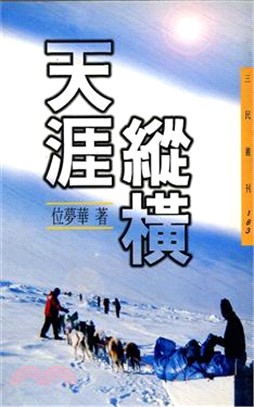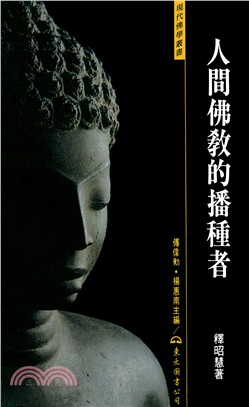Permanent Magnetic Suspension System:Principle,Model,Simulation and Experiment(簡體書)
商品資訊
相關商品
商品簡介
目次
商品簡介
本書內容簡介:第一章介紹了磁懸浮的研究背景、國內外發展現狀、分類及應用;第二章介紹了一種氣隙控制式懸掛型永磁懸浮系統;第三章介紹了一種永磁鐵運動控制式非接觸懸浮球系統;第四章介紹了一種徑向磁化旋轉永磁鐵驅動型非接觸回轉驅動系統;第五章分析了該非接觸回轉驅動系統的特性;第六章介紹了一種磁路控制式永磁懸浮系統;第七章提出了一種磁路控制式永磁懸浮系統的優化結構;第八章介紹了一種雙鐵球並聯懸浮的磁路控制式永磁懸浮系統。
目次
Contents
Preface
Chapter 1 Introduction 1
1.1 Background of non-contact suspension systems 1
1.2 Classification of magnetic suspension systems 5
1.2.1 Classification by magnetic force 5
1.2.2 Classification of Lorentz force in magnetic suspension systems 6
1.2.3 Classification of reluctance force in magnetic suspension systems 7
1.3 Application of magnetic suspension systems 14
1.4 MATLAB 17
1.4.1 Systematic environment 19
1.4.2 MATLAB system constitution 20
1.4.3 Control System Toolbox 21
1.4.4 Simulink Control Design 22
1.4.5 ADC and DAC 22
1.5 dSPACE platform 25
1.5.1 Introduction to the dSPACE 1103 26
1.5.2 Introduction to the dSPACE 1104 28
1.5.3 Introduction to ControlDesk 28
1.5.4 Integrated development environment of dSPACE 28
Chapter 2 Hanging type of permanent magnetic suspension system 31
2.1 Introduction 31
2.2 Suspension principle 33
2.3 Experimental prototype 34
2.3.1 Experimental prototype setup 34
2.3.2 Examination of attractive force 35
2.4 Mathematical model and analysis of suspension feasibility 36
2.4.1 Mathematical model 36
2.4.2 Analysis of suspension feasibility 37
2.5 Realization of zero-power control 39
2.5.1 Realization in device 39
2.5.2 Realization in mathematical model 40
2.5.3 Realization in control system 40
2.6 Numerical simulation 42
2.6.1 Calculation of feedback gains 42
2.6.2 Numerical simulation analysis 43
2.7 Experimental results 48
Chapter 3 Non-contact suspension system with permanent magnet motion feedback 53
3.1 Introduction 53
3.2 Principle of magnetic suspension 55
3.3 Realization of zero-power control 56
3.3.1 Zero-power control in experimental prototype 56
3.3.2 Zero-power control in model 58
3.3.3 Zero-power control in controller 59
3.4 Feasibility analysis of suspension 60
3.5 Numerical simulation 62
3.5.1 Simulation conditions 62
3.5.2 Calculation of feedback gains 63
3.5.3 Simulation results 64
3.6 Experimental results 68
Chapter 4 Non-contact spinning mechanism by using rotary permanent magnets 72
4.1 Introduction 72
4.2 Non-contact spinning principle 73
4.3 Non-contact spinning system 74
4.3.1 Suspension part 75
4.3.2 Spinning part 76
4.3.3 Characteristic experiment 78
4.4 Mathematical model 80
4.4.1 Rotational torque modelling 80
4.4.2 Rotation equation of iron ball 83
4.5 Spinning examination by numerical simulation 83
4.5.1 Step response 83
4.5.2 Velocity in steady state 85
4.5.3 Relationship between input velocity and output velocity 87
4.6 Spinning examination by experiments 88
4.6.1 Step response 89
4.6.2 Velocity in steady state 91
4.6.3 Relationship between input velocity and output velocity 92
Chapter 5 Performance analysis of non-contact spinning mechanism 95
5.1 Introduction 95
5.2 Magnetic field examination by IEM analysis 96
5.2.1 Analysis by using one magnet only 96
5.2.2 Analysis by using two magnets (I and III) 99
5.2.3 Analysis by using four magnets 101
5.3 Simulation examination of rotational torque of iron ball 104
5.4 IEM analysis of rotational torque of iron ball 109
5.4.1 Modelling the remnant magnetization points 109
5.4.2 IEM analysis model and results 110
5.4.3 Rotational torque in stable rotational state 113
5.4.4 Horizontal force 113
5.5 Experimental measurement of rotational torque 114
5.5.1 Measurement device set up 114
5.5.2 Experimental results of rotational torque 115
Chapter 6 Permanent magnetic suspension system using variable flux-path control method 118
6.1 Introduction 118
6.2 Principle of variable flux-path control mechanism 119
6.3 Experimental prototype 120
6.4 IEM analysis of the suspension mechanism 122
6.4.1 Analysis of magnetic flux field 122
6.4.2 Analysis of magnetic flux density and attractive force 126
6.5 Basic characteristics examination by experimental measurement 128
6.5.1 Magnetic flux density of the permanent magnet 128
6.5.2 Magnetic flux density examination by experiment 129
6.5.3 Attractive force examination by experiment 130
6.5.4 Semi-zero suspension force examination by experiment 131
6.5.5 Experimental examination of rotational torque of magnet 133
6.6 Mathematical model and feasibility analysis 134
6.6.1 Modelling suspension force 134
6.6.2 Modelling rotational torque of permanent magnet 135
6.6.3 Motion equations of motor and suspended object 135
6.6.4 Suspension feasibility analysis 136
6.7 Examination of suspension performance 137
6.7.1 Control system 138
6.7.2 Calculation of feedback gains 138
6.7.3 Simulation results 139
6.7.4 Experimental suspension results 140
6.7.5 Examination of semi-zero power suspension characteristic 142
Chapter 7 Improvement for zero suspension force ch
Preface
Chapter 1 Introduction 1
1.1 Background of non-contact suspension systems 1
1.2 Classification of magnetic suspension systems 5
1.2.1 Classification by magnetic force 5
1.2.2 Classification of Lorentz force in magnetic suspension systems 6
1.2.3 Classification of reluctance force in magnetic suspension systems 7
1.3 Application of magnetic suspension systems 14
1.4 MATLAB 17
1.4.1 Systematic environment 19
1.4.2 MATLAB system constitution 20
1.4.3 Control System Toolbox 21
1.4.4 Simulink Control Design 22
1.4.5 ADC and DAC 22
1.5 dSPACE platform 25
1.5.1 Introduction to the dSPACE 1103 26
1.5.2 Introduction to the dSPACE 1104 28
1.5.3 Introduction to ControlDesk 28
1.5.4 Integrated development environment of dSPACE 28
Chapter 2 Hanging type of permanent magnetic suspension system 31
2.1 Introduction 31
2.2 Suspension principle 33
2.3 Experimental prototype 34
2.3.1 Experimental prototype setup 34
2.3.2 Examination of attractive force 35
2.4 Mathematical model and analysis of suspension feasibility 36
2.4.1 Mathematical model 36
2.4.2 Analysis of suspension feasibility 37
2.5 Realization of zero-power control 39
2.5.1 Realization in device 39
2.5.2 Realization in mathematical model 40
2.5.3 Realization in control system 40
2.6 Numerical simulation 42
2.6.1 Calculation of feedback gains 42
2.6.2 Numerical simulation analysis 43
2.7 Experimental results 48
Chapter 3 Non-contact suspension system with permanent magnet motion feedback 53
3.1 Introduction 53
3.2 Principle of magnetic suspension 55
3.3 Realization of zero-power control 56
3.3.1 Zero-power control in experimental prototype 56
3.3.2 Zero-power control in model 58
3.3.3 Zero-power control in controller 59
3.4 Feasibility analysis of suspension 60
3.5 Numerical simulation 62
3.5.1 Simulation conditions 62
3.5.2 Calculation of feedback gains 63
3.5.3 Simulation results 64
3.6 Experimental results 68
Chapter 4 Non-contact spinning mechanism by using rotary permanent magnets 72
4.1 Introduction 72
4.2 Non-contact spinning principle 73
4.3 Non-contact spinning system 74
4.3.1 Suspension part 75
4.3.2 Spinning part 76
4.3.3 Characteristic experiment 78
4.4 Mathematical model 80
4.4.1 Rotational torque modelling 80
4.4.2 Rotation equation of iron ball 83
4.5 Spinning examination by numerical simulation 83
4.5.1 Step response 83
4.5.2 Velocity in steady state 85
4.5.3 Relationship between input velocity and output velocity 87
4.6 Spinning examination by experiments 88
4.6.1 Step response 89
4.6.2 Velocity in steady state 91
4.6.3 Relationship between input velocity and output velocity 92
Chapter 5 Performance analysis of non-contact spinning mechanism 95
5.1 Introduction 95
5.2 Magnetic field examination by IEM analysis 96
5.2.1 Analysis by using one magnet only 96
5.2.2 Analysis by using two magnets (I and III) 99
5.2.3 Analysis by using four magnets 101
5.3 Simulation examination of rotational torque of iron ball 104
5.4 IEM analysis of rotational torque of iron ball 109
5.4.1 Modelling the remnant magnetization points 109
5.4.2 IEM analysis model and results 110
5.4.3 Rotational torque in stable rotational state 113
5.4.4 Horizontal force 113
5.5 Experimental measurement of rotational torque 114
5.5.1 Measurement device set up 114
5.5.2 Experimental results of rotational torque 115
Chapter 6 Permanent magnetic suspension system using variable flux-path control method 118
6.1 Introduction 118
6.2 Principle of variable flux-path control mechanism 119
6.3 Experimental prototype 120
6.4 IEM analysis of the suspension mechanism 122
6.4.1 Analysis of magnetic flux field 122
6.4.2 Analysis of magnetic flux density and attractive force 126
6.5 Basic characteristics examination by experimental measurement 128
6.5.1 Magnetic flux density of the permanent magnet 128
6.5.2 Magnetic flux density examination by experiment 129
6.5.3 Attractive force examination by experiment 130
6.5.4 Semi-zero suspension force examination by experiment 131
6.5.5 Experimental examination of rotational torque of magnet 133
6.6 Mathematical model and feasibility analysis 134
6.6.1 Modelling suspension force 134
6.6.2 Modelling rotational torque of permanent magnet 135
6.6.3 Motion equations of motor and suspended object 135
6.6.4 Suspension feasibility analysis 136
6.7 Examination of suspension performance 137
6.7.1 Control system 138
6.7.2 Calculation of feedback gains 138
6.7.3 Simulation results 139
6.7.4 Experimental suspension results 140
6.7.5 Examination of semi-zero power suspension characteristic 142
Chapter 7 Improvement for zero suspension force ch
主題書展
更多
主題書展
更多書展本週66折
您曾經瀏覽過的商品
購物須知
大陸出版品因裝訂品質及貨運條件與台灣出版品落差甚大,除封面破損、內頁脫落等較嚴重的狀態,其餘商品將正常出貨。
特別提醒:部分書籍附贈之內容(如音頻mp3或影片dvd等)已無實體光碟提供,需以QR CODE 連結至當地網站註冊“並通過驗證程序”,方可下載使用。
無現貨庫存之簡體書,將向海外調貨:
海外有庫存之書籍,等候約45個工作天;
海外無庫存之書籍,平均作業時間約60個工作天,然不保證確定可調到貨,尚請見諒。
為了保護您的權益,「三民網路書店」提供會員七日商品鑑賞期(收到商品為起始日)。
若要辦理退貨,請在商品鑑賞期內寄回,且商品必須是全新狀態與完整包裝(商品、附件、發票、隨貨贈品等)否則恕不接受退貨。
























![漂鳥集[中英雙語版]](https://cdnec.sanmin.com.tw/product_images/957/957146403.jpg)
